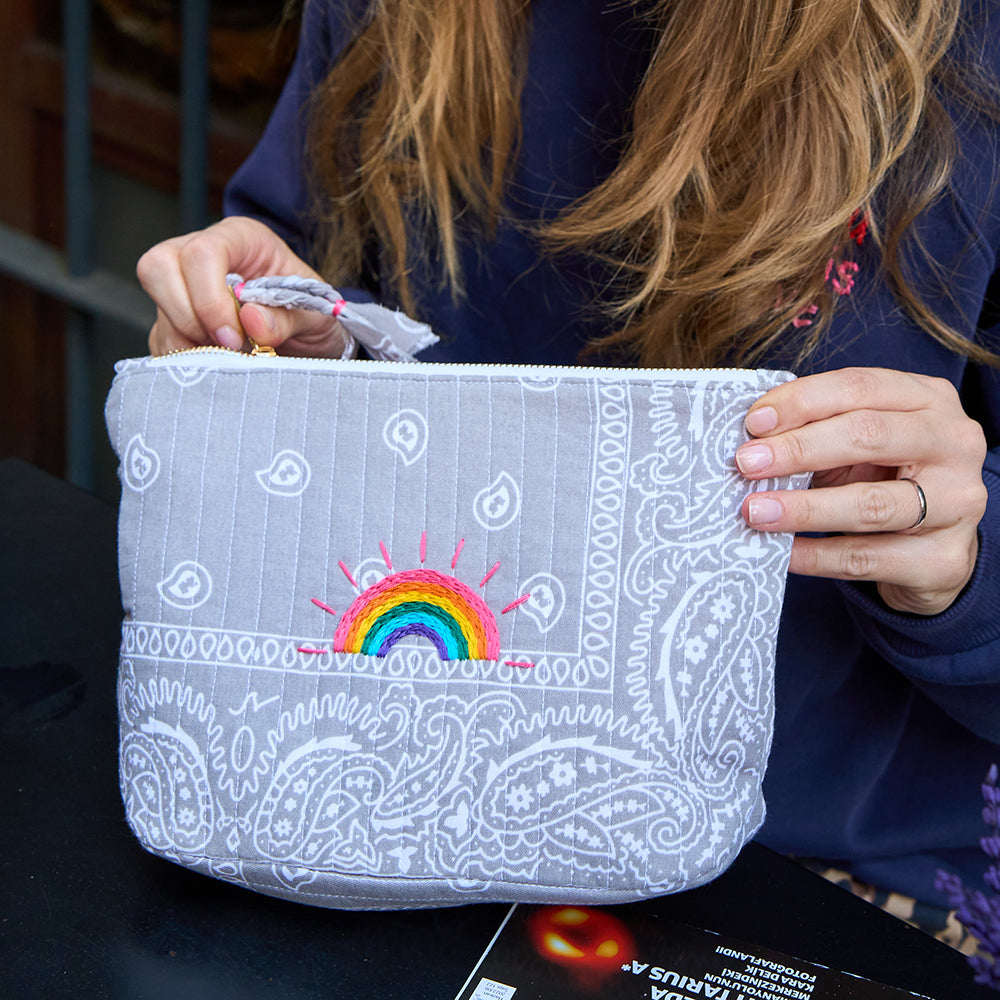Hello, today we will tell you about Rome, the capital of Italy, which has hosted many civilizations throughout history and has a unique place in world history. Rome, known as the "Eternal City", fascinates its visitors with its ancient ruins, magnificent works of art, impressive architecture and vibrant street life. Located on the banks of the Tiber River, the city has been inhabited continuously since prehistoric times and is considered one of the oldest cities in the world.
Rome is the center of the Catholic world and is home to some of the most important works of art and architecture from the Renaissance and Baroque periods. Rome, which also includes the Vatican City, is also famous for its religious sites such as St. Peter's Basilica and the Sistine Chapel.
The city also has an important place in world culinary culture and offers unforgettable tastes to visitors. Rome's climate exhibits Mediterranean climate characteristics; summers are hot and dry, winters are mild and rainy.
Visiting Rome is like taking a journey through time. Ancient monuments such as the Colosseum, the Pantheon, and the Roman Forum offer unique opportunities for those who want to explore the city's rich history and culture.
Festivals in Rome
Rome offers a wealth of culture with various festivals held throughout the year. Celebrating history, art and flavours, these festivals provide fun and unforgettable moments, as well as experiencing the history and tradition of the city. Here are some of the important festivals you should experience in Rome:
Rome Film Festival
- October
- Showcasing the latest and most exciting productions in the world of cinema, this festival focuses on international and local films. The festival offers film screenings, premieres and meetings with artists.
Estate Romana (Roman Writing)
- June - September
- A series of events held throughout the summer in various locations in Rome. Open-air concerts, theater performances, cinema screenings and cultural events bring the city to life.
Carnival of Rome
- February
- The Roman Carnival is a traditional festival with its origins in the Middle Ages. With masked balls, costumed parades and street parties, the city takes on a colourful and joyful atmosphere.
Natale of Rome
- April 21st
- Celebrating the founding of Rome, this festival is considered the birthday of ancient Rome. Various events, reenactments and special activities are held throughout the city.
Festa de' Noantri
- July
- Held in the Trastevere neighborhood, this festival is dedicated to the local patron saint, Madonna del Carmine. Religious ceremonies, street food, and live music celebrate the community spirit in this historic part of Rome.
Festivals in Rome shed light on the city's history, culture and social life. They offer visitors the opportunity to experience Rome's dynamic atmosphere and rich cultural heritage.
Transportation Options in Rome
Rome is a world-famous city for its historic centre and ancient ruins, and offers visitors a wide range of transport options. There are a variety of transport options available to explore the city:
Metro
Rome has two main metro lines (A and B). These lines provide access to many of the city's major tourist attractions, although access to some areas in the historic centre is limited.
Bus and Tram
Extensive bus and tram networks provide access to areas that the metro line cannot reach. Buses are the city's most extensive form of transport, while trams operate on select routes.
Train
Rome's suburban train system (Ferrovia Regionale) connects the city centre with the surrounding areas and nearby cities. It is particularly useful for getting to Rome's airports and nearby tourist attractions.
Taxis
Taxis are readily available throughout the city and offer a faster, more personal option for transportation, but can be more expensive than other public transportation options.
Bicycle and Scooter Rental
Rome can also be explored by bike and electric scooter rentals, which can be a pleasant option in some parts of the city, especially during the spring and summer months.
Rome Pass
Designed for tourists, the Roma Pass offers unlimited use of public transport for a certain period of time and free or discounted entry to some museums and archaeological sites.
Transportation in Rome can often be busy and crowded, especially during tourist seasons. However, with proper planning and taking advantage of different transportation options, you can explore the city comfortably.
Transportation from Rome Airport to City Center
Rome has two main airports: Leonardo da Vinci-Fiumicino (FCO) and Ciampino (CIA). There are several options to get to Rome city centre from either airport.
Transportation from Leonardo da Vinci-Fiumicino Airport (FCO)
Leonardo Express Train: provides direct access from Fiumicino Airport to Termini, Rome's main train station. The journey time is around 30 minutes and trains depart approximately every 15-30 minutes.
Regional Train
A slightly more economical option is regional trains, which run from the airport to Trastevere, Ostiense and Tiburtina stations. They stop at more frequent stops than the Leonardo Express.
Bus
Various companies offer regular bus services from Fiumicino Airport to Rome city centre and Termini station. Travel times may vary depending on traffic conditions.
Taxi
Taking a taxi from the airport to the city centre is a more expensive option, but may be suitable for groups or those with heavy luggage. A flat rate applies from Fiumicino to the city centre.
Transportation from Ciampino Airport (CIA)
Bus and Metro
One of the most economical ways to get from Ciampino Airport to the city center is to first take a bus to Anagnina metro station, then take the metro to the city center.
Shuttle Bus
Shuttle buses operate between Ciampino Airport and Rome Termini, providing direct and affordable transportation.
Taxi
Taxi transportation from Ciampino Airport to Rome city center is based on a fixed tariff and journey times may vary depending on traffic conditions.
For visitors traveling to Rome, transportation from both airports to the city center offers a variety of flexible options. By choosing the transportation method that best suits your travel plan and budget, you can begin to discover the historical and cultural beauties of Rome.
Places to Visit in Rome
Rome has one of the richest historical heritages in the world, with its ancient monuments, Renaissance works of art and baroque architecture. In this unique city, where every corner is filled with history and art, there are countless places to discover for visitors. Here are some of the important places to visit in Rome:
Colosseum
Located in the heart of ancient Rome, this iconic amphitheater hosted gladiator fights and other public spectacles. The Colosseum is one of Rome's most famous landmarks and gives visitors a taste of the grandeur of the Roman Empire.

Pantheon
The Pantheon, a perfectly preserved Roman temple, fascinates visitors with its architecture. The famous oculus (eye) opening into the dome allows natural light into the building.

Vatican City
Vatican City, the smallest independent state in the world, is the center of the Catholic Church. St. Peter's Basilica, the Sistine Chapel and the Vatican Museums are the most important places to visit.

Trevi Fountain
One of the most famous works of Baroque architecture, the Trevi Fountain is the largest and most famous fountain in Rome. According to tradition, a coin thrown into the fountain with your back turned guarantees a return to Rome.

Spanish Steps
Located in Piazza di Spagna, these famous stairs are known for their baroque design and wide steps. From the top of the stairs, you can see wonderful views of Rome.

Roman Forum
The political, commercial and religious centre of ancient Rome, the Forum once contained grand temples, council buildings and public squares. Today, these historic ruins stand as a reminder of the power and grandeur of the Roman Empire.

Campo de' Fiori
This square, where a colorful market is set up during the day and is lively with restaurants and cafes in the evenings, is the heart of Rome's social life.

Trastevere
Located west of the Tiber River, the Trastevere neighborhood is known for its narrow streets, colorful buildings, and lively atmosphere. It is considered the most authentic and bohemian area of Rome.

What to Eat in Rome
Rome is a city that offers the most delicious dishes of Italian cuisine. Dishes prepared with traditional recipes and fresh ingredients prove that Rome is a gastronomic paradise. Here are some special flavors that you should try in Rome:
Pasta Carbonara
A classic of Roman cuisine, this dish contains pancetta (Italian bacon), eggs, cheese (usually Pecorino Romano) and plenty of black pepper. It is a popular choice among locals.

Supplì
Supplì is an Italian dish made with risotto rice, tomato sauce and mozzarella cheese, then coated in breadcrumbs and fried. A street food favourite, supplì is perfect as a snack.
Cacio e Pepe
Another simple yet delicious Roman classic, cacio e pepe is a pasta dish made with just cheese (cacio) and black pepper (pepe). The dish stands out for the quality of the ingredients.

Pizza al Taglio
In Rome, pizza is usually cut into rectangular shapes and sold by weight. At "pizza al taglio" shops, you can try pizzas prepared with a variety of toppings.

Artichokes (Carciferous)
In Rome, artichokes are cooked in various ways, notably "Carciofi alla Romana" (Roman artichokes) and "Carciofi alla Giudia" (Jewish fried artichokes).

Gelato
Gelato, the Italian ice cream, comes in many different flavors in Rome and is the perfect way to cool down at the end of a hot day.

Tiramisu
Tiramisu, the famous dessert of Italian cuisine, is frequently featured on the menus of patisseries and restaurants in Rome. Don't leave without trying this light dessert made with coffee, mascarpone cheese, eggs and sugar.

Rome offers an unforgettable experience to its visitors with its delicious food as well as its historical and cultural riches. Discovering traditional Roman cuisine allows you to feel the spirit of the city more closely.
Things You Need to Know Before Going to Rome
Before your trip to Rome, here are some important information and tips you may need while exploring this unique city:
Language
The official language in Rome and in Italy in general is Italian. Learning basic Italian phrases can make communication easier. However, English is widely spoken in tourist areas and in the service sector in general.
Currency
Italy is located in the Eurozone, where the Euro (€) is used. ATMs are common throughout the city and credit cards are accepted in most places.
Transportation Cards
If you plan on using public transport in Rome, there are a variety of passes and tickets available. Roma Pass and Metrebus tickets offer unlimited travel on public transport and discounted or free entry to some museums.
Accomodation
There is a wide range of accommodation options available in Rome, but it is important to book well in advance, especially during high season (spring and autumn).
Food and Drink
Dining in Rome tends to start late. If you want to go out for dinner, the busiest hours are between 7pm and 9pm. It’s a good idea to make a reservation to ensure you get a table at popular restaurants.
Cultural Label
Italians value personal space and mutual respect. It's good manners to say "Buongiorno" (Good morning) or "Buonasera" (Good evening) when entering a shop, and "Arrivederci" (Goodbye) when leaving.
Rome offers an unforgettable experience with its historical, cultural and gastronomic riches. These tips will provide you with the basic information you need before visiting Rome and will help you discover the city. We hope you liked our article. If you go to Rome, remember Mikos Store :) We wish you a pleasant day.







